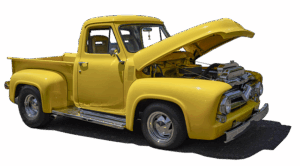Register Your Car in California: Step-by-Step Guide with VIN Verifier
Looking to register your car in California? This comprehensive guide will walk you through the process, ensuring a smooth transition. From understanding crucial registration requirements and gathering…….

Looking to register your car in California? This comprehensive guide will walk you through the process, ensuring a smooth transition. From understanding crucial registration requirements and gathering essential documents to visiting a local California Department of Motor Vehicles (DMV) office, each step is detailed for a successful registration. Don’t forget to utilize the VIN verifier for accurate verification during the application. By following these instructions, you’ll be on your way to securing your vehicle’s registration in no time.
- Understand California Car Registration Requirements
- Gather Necessary Documents for Registration
- Visit a California Department of Motor Vehicles (DMV) Office
- Complete the Car Registration Application Form
- Pay the Registration Fee and Receive Your License Plate
Understand California Car Registration Requirements

Before registering your car in California, it’s crucial to understand the state’s specific requirements. One key aspect is ensuring your vehicle has a valid and accurate Vehicle Identification Number (VIN) that can be verified through official channels. The California Department of Motor Vehicles (DMV) mandates this process as part of their registration procedures.
A mobile VIN verification or inspection, conducted by a trusted service, plays a significant role in this process. This involves using specialized tools to check the integrity and authenticity of your car’s VIN, which is then submitted to the DMV for validation alongside other essential documents. By adhering to these guidelines, including timely registration renewal and accurate information provision, you can ensure a smooth vehicle registration experience in California.
Gather Necessary Documents for Registration

Before registering your car in California, ensure you have all the required documents ready. The process involves several key pieces of information, and a VIN (Vehicle Identification Number) verifier plays a crucial role. Start by obtaining your vehicle’s VIN, which can typically be found on the vehicle’s registration certificate or in its manual. For convenience, consider using a mobile VIN verifier to quickly and accurately capture this unique identifier without leaving home.
Additionally, gather important documents like proof of ownership (a title or bill of sale), a valid driver’s license or ID card, and current insurance papers. If you’ve recently purchased the vehicle, ensure you have all necessary paperwork from the dealer, including any inspection reports or certificates related to the car’s condition. These documents will streamline the registration process at the California Department of Motor Vehicles (DMV).
Visit a California Department of Motor Vehicles (DMV) Office

To begin the registration process for your car in California, the first step is to visit a local California Department of Motor Vehicles (DMV) office. This is where you’ll submit all necessary documents and ensure your vehicle meets state standards. Upon arrival, locate the appropriate counter for vehicle registration and have your important paperwork ready, including your driver’s license, proof of insurance, and title or lienholder information.
While at the DMV, consider taking advantage of their services like a vin inspection (using a vin verifier) to confirm your vehicle’s identity and history. This step is crucial in ensuring you’re complying with California’s regulations and can help prevent potential issues down the line. Many offices now offer online appointments to streamline the process further, making it more convenient for busy individuals.
Complete the Car Registration Application Form

To begin the registration process, you’ll need to complete the Car Registration Application Form, which is available at your local California Department of Motor Vehicles (DMV) office or online. This form requires detailed information about your vehicle, including its make, model, year, and specific features. Make sure to accurately list the Vehicle Identification Number (VIN), as it’s crucial for identifying your car during the registration and title transfer process.
One efficient way to ensure the accuracy of your VIN is through a mobile vin verification service. This allows you to quickly and easily validate the VIN using your smartphone or tablet, providing an additional layer of security and convenience during the registration. After completing the form, you’ll need to schedule a visit for a vehicle inspection at a designated DMV location, where an inspector will confirm that your car meets all safety standards before issuing the registration and license plate.
Pay the Registration Fee and Receive Your License Plate

After confirming that all required documents are in order, it’s time to pay the registration fee. This fee covers the cost of registering your vehicle and issuing a unique California license plate. You can typically pay online through the DMV website or at a local DMV office. Once the payment is processed, you’ll receive your new license plate, which displays your Vehicle Identification Number (VIN). It’s crucial to display this plate on your vehicle at all times as per state regulations.
Ensure that you acquire a reliable VIN verifier to confirm the authenticity of your vehicle’s history before registration. Some services even offer mobile vin inspection options, making it more convenient to verify a car’s details before committing to its purchase. This step is essential in California, where strict standards are enforced for all registered vehicles.
Registering your car in California is a straightforward process, ensuring your vehicle complies with state laws. By understanding the requirements, gathering essential documents, and visiting a local DMV office, you can complete the registration smoothly. Don’t forget to utilize modern tools like a VIN verifier for added convenience during the initial stages of the process. With these steps as your guide, you’ll have your California car registered in no time, allowing you to hit the road legally and with peace of mind.







